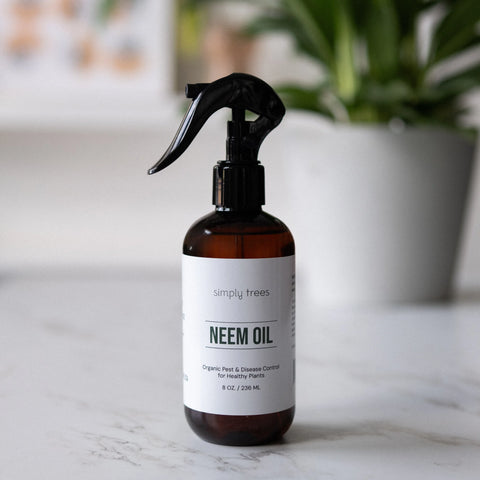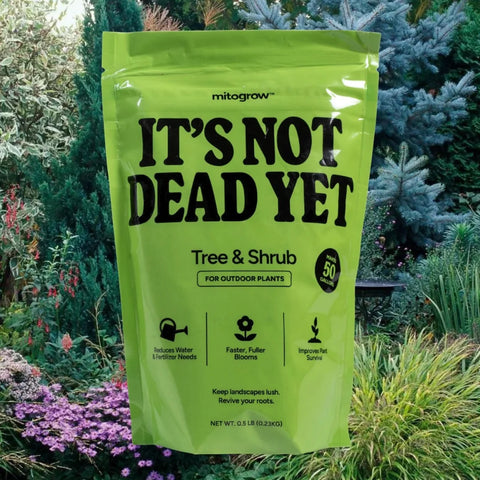Growing your own apples at home is easier than you think—and few things are more rewarding than biting into a crisp, sun-ripened apple you grew yourself. Whether you prefer the sweet crunch of Fuji, the tart snap of Granny Smith, or the balanced flavor of Honeycrisp, this care guide will help you grow thriving trees that produce delicious fruit year after year.
→ Shop Apple Trees at Simply Trees
Know Your Varieties
-
Exceptionally sweet, crisp, and juicy
-
Requires a high number of chilling hours (700–900)
-
Best in Zones 6–9
-
Sweet-tart balance with explosive crunch
-
Moderate chill hours (~800)
-
Best in Zones 4–8
-
Tart, green apples great for baking and fresh eating
-
Low chill hours (~400–600)
-
Performs well in Zones 6–9
Sunlight & Placement
Apple trees need full sun to thrive and produce fruit.
-
Minimum 6–8 hours of direct sunlight daily
-
Choose a location with good air circulation to prevent disease
-
Avoid frost pockets or low-lying areas where cold air settles
If growing in a container, place it on a sunny patio or deck that receives consistent sun.
Watering & Soil
-
Water deeply when the top 2 inches of soil are dry
-
During the first 1–2 years, keep the soil consistently moist (not soggy) to establish strong roots
-
Mature trees are more drought tolerant but benefit from deep weekly watering during dry spells
Soil requirements:
-
Well-draining loamy soil is ideal
-
Slightly acidic to neutral pH (6.0–7.0)
-
Amend clay or compacted soil with compost or sand for drainage
Fertilizing
-
All Simply Trees apple trees are shipped with a slow-release organic fertilizer in the soil—do not fertilize right after planting
-
Begin fertilizing the second year, using a balanced organic fruit tree fertilizer in early spring
-
Avoid fertilizing in late summer or fall, which can promote tender growth that’s vulnerable to frost
Pruning Apple Trees
Pruning is essential for structure, fruiting, and airflow.
-
When to prune: Late winter or very early spring before new buds emerge
-
How to prune:
-
Remove dead, damaged, or crossing branches
-
Thin interior branches to allow light into the canopy
-
Shape the tree into an open “vase” or central-leader form
-
Remove vertical water sprouts that sap energy from fruit production
-
Prune lightly in summer if needed to maintain shape.
Chill Hours & Pollination
Chill hours = cumulative hours between 32–45°F needed for fruit set.
Each variety has specific requirements:
-
Fuji: ~700–900 hours
-
Honeycrisp: ~800 hours
-
Granny Smith: ~400–600 hours
If you’re in a warm winter climate, Granny Smith is your best bet.
Pollination tips:
-
Apple trees are not reliably self-pollinating—they need a compatible second variety nearby to produce fruit
-
Fuji, Honeycrisp, and Granny Smith can cross-pollinate each other
-
Plant trees within 50 feet of each other or use crabapples as pollinators
If you’re limited on space, consider planting two varieties in large containers near each other.
Growing Apple Trees in Containers
Yes—you can grow apples in containers, especially if you’re limited on space or want more control.
-
Trees ship in 10–12 inch nursery pots
-
Repot into a container 1–2 inches wider, eventually moving up to a 15–25 gallon pot
-
Use a well-draining, slightly acidic potting mix with compost and perlite
-
Place in full sun and rotate the container regularly for even growth
-
Container-grown trees will need more frequent watering and fertilizing
→ Shop Apple Trees in Containers
Pests & Problems
Apple trees are prone to a few common issues, but most are manageable:
-
Aphids – Use insecticidal soap or neem oil
-
Codling moth (the “worm in the apple”) – Use pheromone traps or kaolin clay
-
Apple scab & powdery mildew – Improve airflow through pruning; apply organic fungicides as needed
-
Deer & squirrels – Protect young trees with fencing or netting
Keeping trees pruned and spaced properly will reduce disease risk and improve fruit quality.
Fruiting Timeline & Harvest Tips
-
Apple trees typically produce fruit 2–4 years after planting
-
Expect to see blossoms in spring and harvest mature fruit in late summer to fall
-
Pick apples when they’re firm, full-colored, and easily twist off the branch
-
Taste is the best test—some varieties can hang on the tree for a week or two after ripening
Final Thoughts
Apple trees are a rewarding addition to any garden—whether you’re growing Fuji for sweetness, Granny Smith for baking, or Honeycrisp for fresh eating. With the right care and a second tree nearby for pollination, you’ll be harvesting crisp, homegrown apples for years to come.





